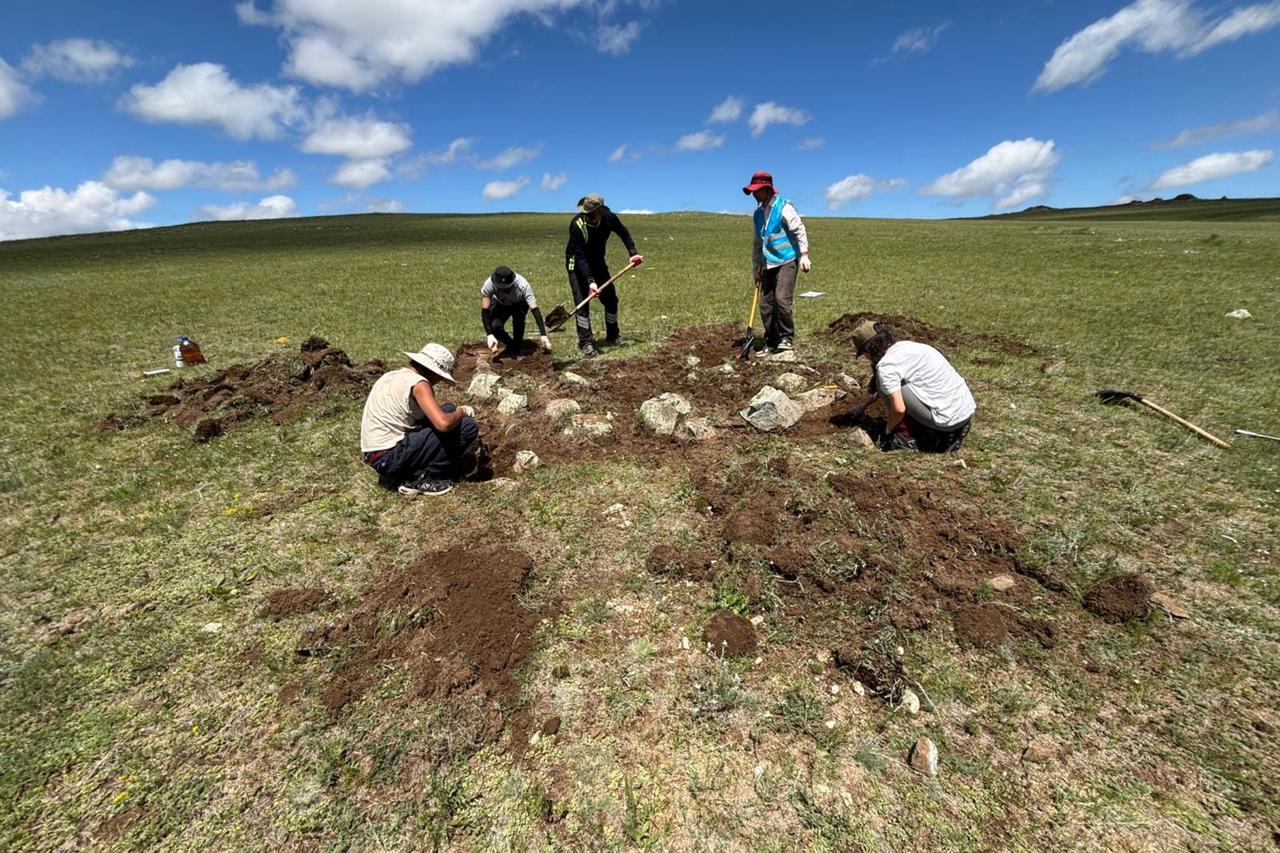
Archaeologists from Türkiye and Mongolia have launched the latest phase of the "Atlilar Kulturu" (Culture of Horsemen) project, a collaborative excavation effort aimed at uncovering the burial traditions of medieval nomadic societies.
The project, sponsored primarily by the Ilterish Foundation, focuses on sites in Mongolia’s Tuv Province, including the sacred mountain of Shovh Uul and the Tuul River basin, where kurgans—burial mounds constructed by nomadic cultures—are being carefully excavated.
This year’s campaign centers on the Bor Ovoo hill, adjacent to the monument of Uighur Khagan Moyen Chor in Arkhangai Province. Excavators are currently working on five burial mounds that span from the Bronze Age to the 13th century.
These structures, known as kurgans, are believed to have served both as graves and ritual monuments for elite members of ancient nomadic societies.
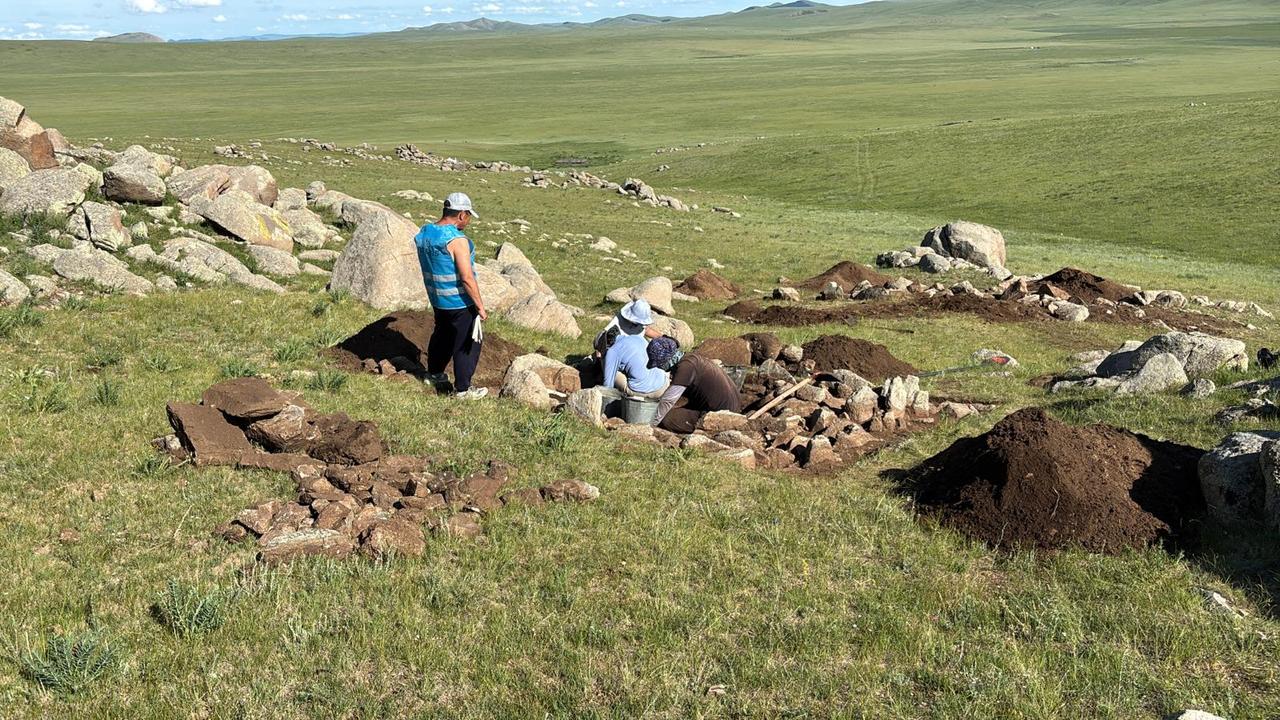
Bor Ovoo holds particular importance, not only due to its proximity to the eighth-century Uighur inscription erected by Moyen Chor but also because of its long-standing spiritual significance. According to excavation director Professor Dr. Kursat Yildirim of Istanbul University, the mound has been used for religious ceremonies for over 3,000 years.
“People buried their dead here starting from 2000 B.C. up to the 13th century A.D.,” he explained, adding that the site reveals strong evidence of ancestor worship.
The name "Bor Ovoo" itself reflects its sacred function—"bor" means "brown" in Mongolian, while "ovoo" refers to stone cairns considered holy in both Mongolian and Turkic cultures. Despite having official excavation permits, Yildirim noted that some locals questioned the team’s presence, underscoring the site’s ongoing cultural reverence.
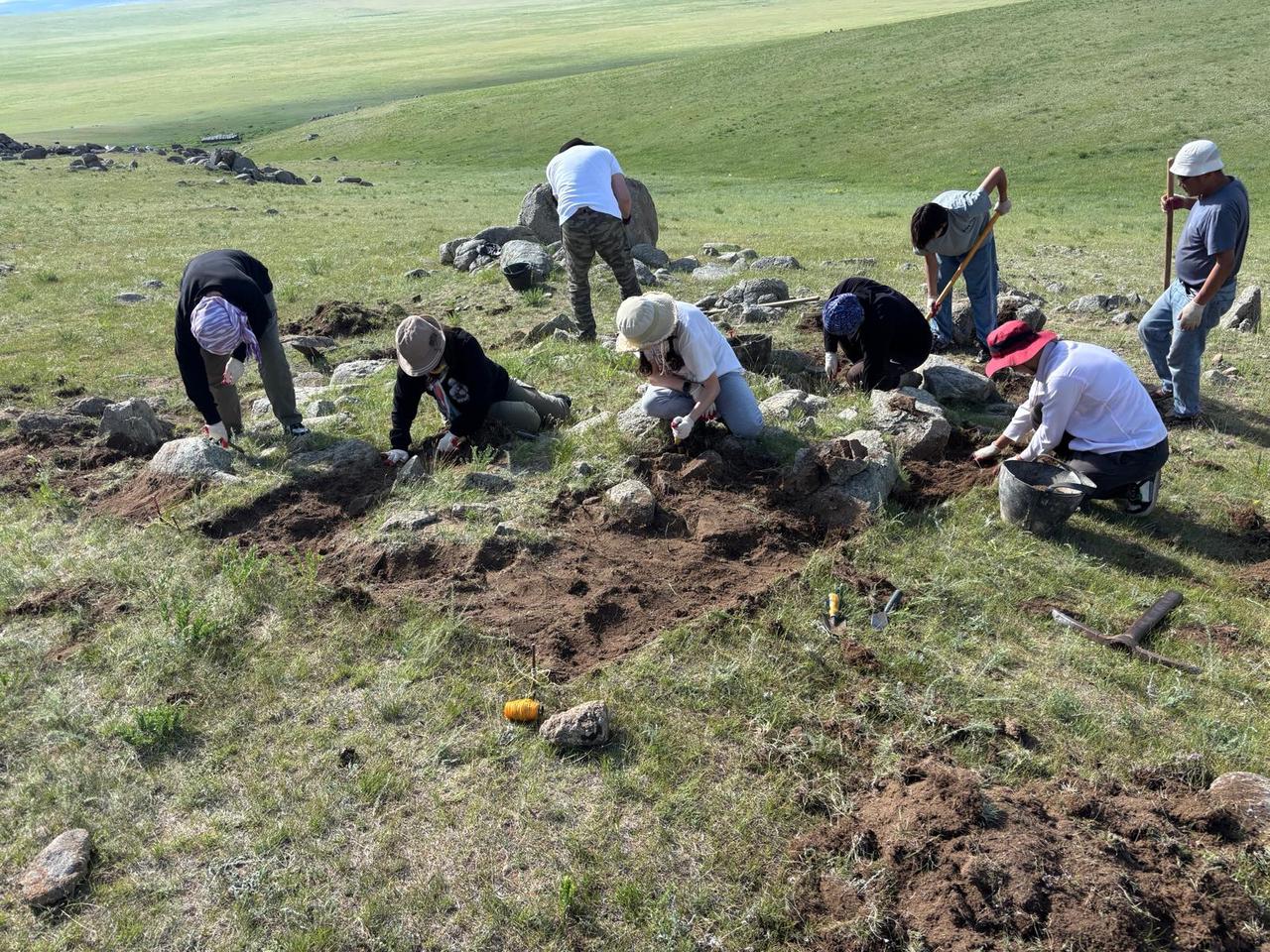
The current focus at Bor Ovoo is to document the architectural layout of five tombs and analyze the human and animal remains found within them. The team aims to recover bronze and iron tools, as well as pottery fragments, which could offer insights into everyday life and funerary customs of steppe societies.
Yildirim highlighted the potential of these finds to trace cultural continuity from the Bronze Age through the Middle Ages. “This allows us to determine whether burial practices evolved or remained stable,” he said.
The monumental nature of some tombs may also indicate the social status of those buried, providing data on how nomadic societies structured their elite classes and memorialized their dead.
Beyond internal cultural patterns, the team hopes the findings will help map broader interactions between Central Asian nomads and neighboring cultures in Siberia and Inner Asia.
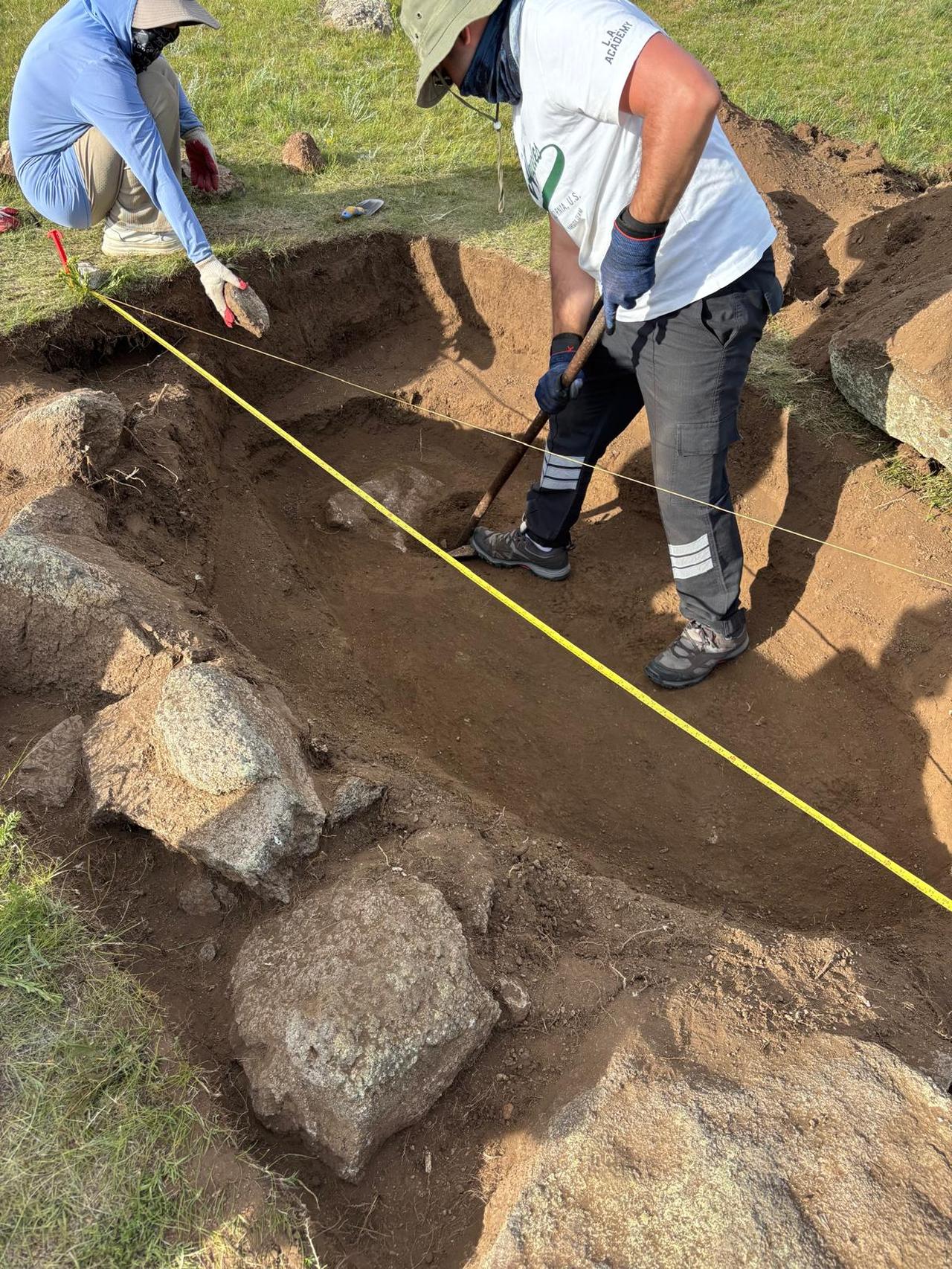
The project is led by an international team including Professor Kursat Yildirim, Associate Professor Elvin Yildirim, Ferhat Ciftci, and Seyma Sapma from Türkiye, as well as Associate Professor Ulziibayar Sodnom, Professor Erdene Myagmar, and Tsenguun Ganbold from Mongolia.
According to Yildirim, the collaboration benefits both nations, combining Türkiye’s academic strengths with Mongolia’s deep-rooted traditions in steppe archaeology.
“There are very few scholars in Türkiye working on steppe archaeology,” he noted, pointing out the importance of hands-on experience and knowledge exchange. The cooperation has already inspired new plans for future joint excavations, although these efforts remain dependent on financial backing.
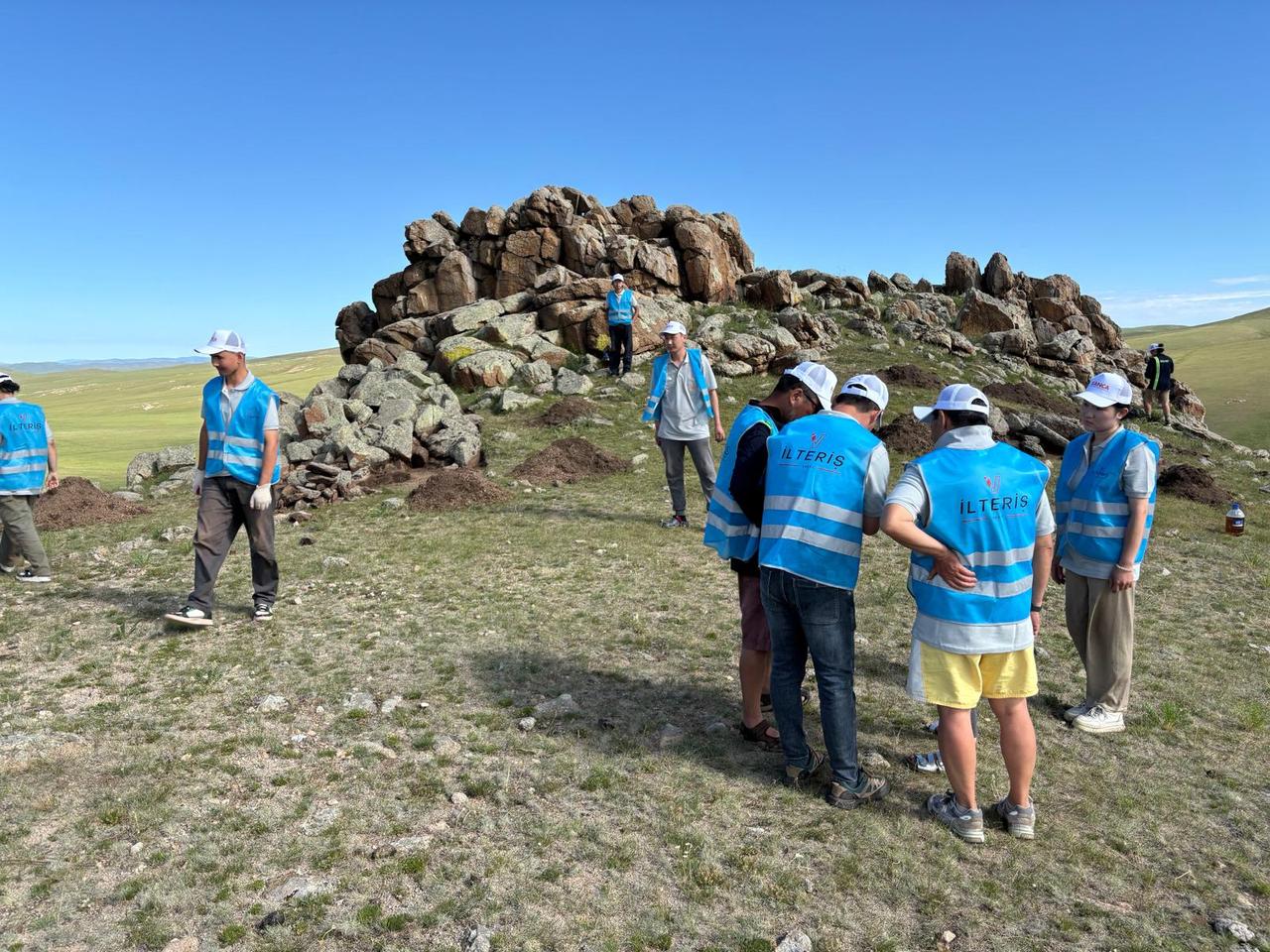
Artifacts uncovered from the burial mounds will be cataloged and preserved by Mongolian authorities, with select items to be exhibited in national museums. Due to legal, logistical, and conservation concerns, transferring these objects to Türkiye is not feasible.
The excavation results will be published in scientific reports and articles in Turkish, Mongolian, and English.
With two large and three smaller burial mounds already under investigation, the project is expected to contribute significantly to the understanding of Turkic and Mongol mortuary traditions.